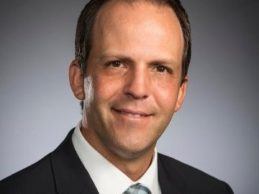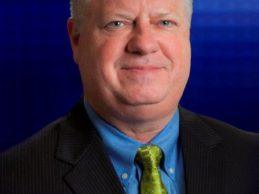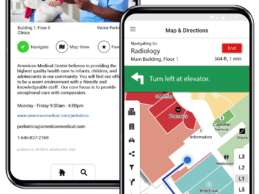Video-conferencing software like Zoom has been getting a lot of attention of late as more and more people turn to digital tools to communicate remotely, whether to stay connected with loved ones, keep work flowing, or communicate with clients.
Healthcare is certainly no exception. A global FICO study found that around 80% of people want to use their mobile phones to interact with doctors and other healthcare providers.
Digital healthcare solutions were already on the rise
Read More
Health IT & Digital Health-Opinion | Op-Eds | Guest Columns | Analysis, Insights - HIT Consultant
4 Ways Healthcare Organizations Can Establish Partnerships to Drive Innovation
With public and private healthcare spending significantly outpacing that of other countries, U.S. hospitals face intense pressure to find new ways to capture greater value. More and more, organizations are finding that partnerships with existing vendors can help unlock next-level performance gains in a transformative environment.
Take Nebraska Medicine, for example. In the early 2000s, the health system created multidisciplinary committees to boost revenue integrity and adopted new revenue
Read More
Enhancing Patient Care With a Touchscreen EMR Interface
A clinician’s mission is to deliver the best possible care to his or her patients. However, when technology gets in the way of the workflow, clinicians are obligated to spend valuable time making sure data inputs are accurate and complete across disparate systems. Nowhere is this more prevalent than with electronic medical records (EMRs).
Dr. Peter Greene, MD, CMIO, with Johns Hopkins, said, “Efficiency is really at the heart of what troubles us most. Clinicians really want the EMR to make
Read More
Post COVID-19: 3 Things I Hope Healthcare Won’t Recover From
The loss of lives and livelihoods from COVID-19 is almost too much to comprehend. And yet, slowly, conversations are emerging about the positives percolating from the pandemic.
It’s human nature to want to look for the positives in even the worst of situations, and I’ve noticed that in both my personal and my professional circles of late, people are talking about the things they hope we don’t lose when things go back to “normal.”
Chief among them, especially in my healthcare technology
Read More
Hospital Wayfinding: The Next Frontier in Healthcare Design
Healthcare facilities and their sprawling campuses can be overwhelming and challenging to navigate. In fact, facilities lose close to $800 million a year due to missed hospital appointments, and many physicians blame a significant portion of this lost revenue on the problems patients have navigating these facilities.
Figuring out where to park and finding the correct office can be stressful and negatively impact the patient’s experience. Making matters worse, most hospital staff members work
Read More
COVID-19: Why Designers Must Play A Larger Role in Healthcare’s Future
The coronavirus outbreak has brought epic casualties as more than 7.3 million cases have been confirmed globally and more than 413,000 people--and counting--are known to have died. In the United States, the COVID-19 pandemic has shown flaws in our medical system, from basic preparedness to the coordinated distribution of medical equipment. Within this global tragedy, there are stories of heroism and renewed mind power and energy addressing health care.
In reaction to shortages, we’re
Read More
Post COVID-19: Medical Billing Finally Realizes the Value of Text-to-Pay
Contactless payments were on the rise even before COVID-19 hit. But now, health systems should see them as essential. Consumers are increasingly wary of touching a credit card terminal that others have used, a perfect conduit for spreading germs. For consumers, text payments serve as a convenient contactless way to pay, but there are other unique benefits when this method of payment is applied in a healthcare setting.
Let’s look at how text payments can fit into a health system’s revenue
Read More
Top 4 Disruptions Healthcare Providers Should Prepare to Address
The past few years have been particularly interesting for the healthcare landscape. We’ve seen a surge in telemedicine and retail clinics, increasing use of personal healthcare devices such as watches and fitness trackers, aggressive attempts to dismantle the ACA, the growing influence of private equity investment firms, and massive mergers with disruptive enterprise market entries such as Amazon. As the ground beneath them continues to shift, many providers are venturing into new territory to
Read More
Eliminating the Long, Cumbersome and Costly Diagnosis of Genetic Diseases
The answer to questions about human disease can be found in our genes. The difficulty in the past has been the testing process, a sort of trial and error approach of drilling down into the multitude of variants that can be found within the genes, variants that when analyzed in tandem with detailed clinical histories can actually tell the story and lead to a faster diagnosis.
Human beings carry around 20,000 genes and, of those, approximately 5,000 are somewhat understood, and those genes can
Read More
Why COVID-19 Highlights Urgent Need to Humanize and Modernize The Patient Financial Experience
It’s no secret that COVID-19 and the
corresponding near-immediate economic catastrophe will be felt for
significantly longer than the few short months it took to wreak its initial
havoc. While losses hit businesses from “a to z” (...except maybe Amazon, ironically),
hospitals and health systems tasked with treating the victims of this pandemic
bear a particularly harsh dose of the financial fallout -- $72 billion in CARES
Act hospital grants barely serving as a band-aid to the financial
Read More










